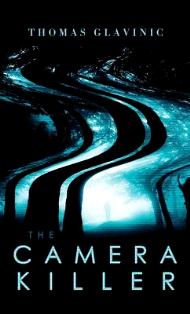
First published in German back in 2001 under the title ‘Der Kameramörder’, Austrian author Thomas Glavinic later released his novella into English for the first time in July of 2012 under the title of ‘The Camera Killer’. The novel was the third piece of Glavinic’s work to be translated into English, having been translated by John Brownjohn. The book was awarded the 2002 Friedrich-Glauser Prize for crime fiction.
DLS Synopsis:
Together with his partner, Sonja Wagner, they’d decided to spend their Easter holiday visiting their friends Heinrich and Eva Stubenrauch at their home in West Styria. Located out in the rural countryside, the Stubenrauch’s home offered a tranquil setting for walks and recreational sports, along with good company and good food.
However, their Easter holiday is turned on its head when breaking news of a horrendous double murder that has just occurred in the nearby vicinity is announced. The news channels begin to deliver back-to-back reports on the horrifying story, releasing details of the crime and the one young boy who managed to survive the ordeal.
It soon emerges that a man of around thirty-years-old had come across three young brothers playing in the woodland outside of the small town of Frauenkirchen and had taken the nine-year-old boy captive. The man had then told seven-year-old Franz to climb a nearby tree, to the height of around thirty-five to forty feet in the air, and then demanded that he jump off, or else he would kill his entire family in a truly horrific manner.
After the desperate seven-year-old eventually plummets to his death, the unknown man moved on to his eight-year-old brother, Josef. The boy duly climbs another equally tall tree, and after much psychological torment, threatening the life of his remaining brother and the rest of their family, the boy also jumps to his death.
Disturbingly, all throughout the ordeal, the killer has been filming the entire heinous act. Footage of which is later discovered by a gas station attendant, along with the discarded video camera.
Twenty-four hour news coverage ensues, with Heinrich taking a particular interest in the unfolding events and the resulting manhunt. The four friends nevertheless attempt to continue with their relaxing holiday together, but find that with the cruel killer still at large in the nearby vicinity, talk of anything else is few and far between...
DLS Review:
When a piece of fiction is originally written in a different language and then later translated into another, no matter how competent the translator is, areas of the text and the general flow of the tale are going to be susceptible to some change. Furthermore, there’s also an element of social and cultural context that never quite transfers across with a translation. The styling and choice of word used by the author in the original text is always going to suffer beyond the author’s control. It’s not going to be the same read; at best just a close approximation of it. And this really needs to be taken into account when reading the translated version of the novella.
And to be honest, this is particularly noticeable with ‘The Camera Killer’. Brownjohn’s translation is rigid and literal, without any real flair behind any of the choices in word. Whether this is due to a slight fault in translation, a symptom of the original dialect, or merely the writer’s ‘contemporary’ style, is somewhat unclear. However, the end result is that the English version of ‘The Camera Killer’ is incredibly direct, with stark and solid words used to convey the developing situation. However, at the very start of the novella, our unnamed narrator states “I have been requested to commit everything to paper” and as such, the text is supposed to be a (fictional) account, provided in hindsight in the first-person-perspective by one of the four friends. An account which, if in real life, would be without literary flair. And so perhaps the writing style does indeed do the novel absolute justice.
One thing that certainly needs mentioning regarding the novella is the levels of psychological torment that are portrayed in the plot from surprisingly early on. What the psychotic ‘Camera Killer’ puts the three young brothers through is pretty darn tough reading. It’s shocking and intense, with vivid details of the torment detailed in chilling clarity.
Outside of the Camera Killer’s video footage which is controversially broadcast on television, the remainder of the novella is taken up with the four friends’ reaction to what they are watching and their voyeuristic interest in the proceeding manhunt. To add a strange degree of normalcy to what remains of their holiday, they try to continue with entertaining themselves away from the unfolding murder case; spending time playing table tennis, badminton, cards and the like. However it’s never very long before they come back to checking for further updates on the Camera Killer situation.
The drama that quickly culminates to a sudden finale is slightly predictable but nevertheless impactful and incredibly compelling to read. It ends the novella on a monstrous high-point, concluding in a suitably satisfying fashion.
The novella is a powerful, shocking and utterly intense read that keeps the reader glued to the unfolding drama. There are no chapters to break up the storyline, encouraging the reader to plough through the reasonably short novella in one intense sitting. And this should certainly be encouraged in order to feel the full effect of the tale. It’s one that will leave a lasting impression on most readers, with the vivid psychological torment depicting how cruelty sees almost no bounds. And it’s all the more blood-chilling for it.
The novella runs for a total of 108 pages.

© DLS Reviews






